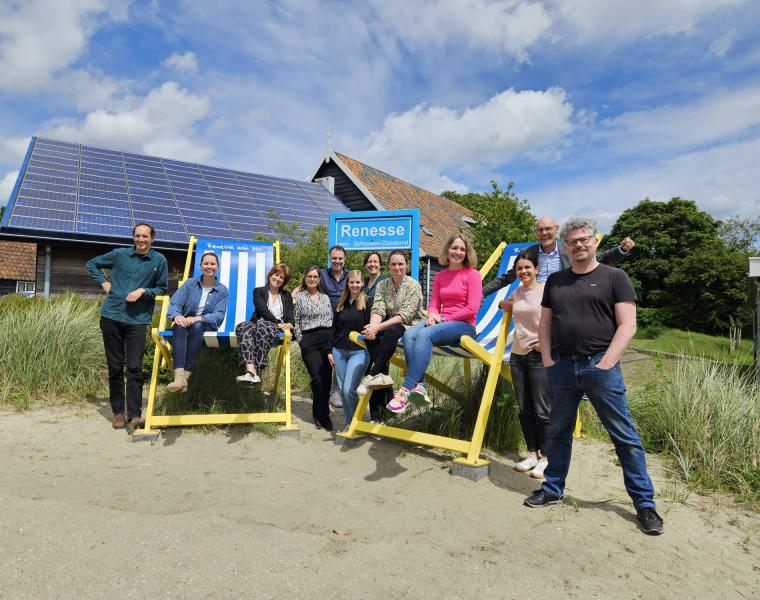The goose that laid the golden eggs is losing its shine
“The goose that laid the golden eggs is losing its shine; support for tourism on Schouwen-Duiveland is further eroding”, was the headline in the Provinciale Zeeuwse Courant on 28 October last year. A very freely translated, negatively formulated and also partly incorrect representation of the results of the research that HZ Kenniscentrum Kusttoerisme conducted that year into how residents experience tourism on the Zeeland island. We have seen this focus on the negative side of the story more often in the media in recent years. Of course, we must take the disadvantages that residents experience as a result of tourism seriously and limit them as much as possible. But amid the negative framing, we sometimes seem to forget that tourism also brings so many advantages. After all, many people have a job in the sector or have income from private rental and without all those guests, the average Zeeland village of 2,000 residents would not have a full-fledged supermarket, butcher and baker.
From this positive approach – and in line with the ambition from Perspective 2030, that every Dutch person will benefit from tourism by 2030 – there has been a so-called frontrunner group for several years now, which has been working on the subject of ‘resident benefits’ under the leadership of NBTC. DMOs and knowledge institutions exchange knowledge within this group about the benefits that tourism has or can have for residents, how we can better visualise, communicate and increase these. The idea behind this is that tourism should be a means of promoting broad prosperity and therefore, on balance, have a positive effect on the residents of a destination. There is a lot of attention for the negative impact of tourism, but how can we give this positive impact the attention it deserves?
The conversation quickly turned to interventions: how can we let residents experience more benefits from tourism? This also raises the question: how do you measure resident benefits and the effect of measures to increase these benefits? This is how the idea arose to conduct research into suitable measurement methods to visualise how residents view the benefits of tourism. We are all familiar with the questionnaire and the interview, but many more roads lead to Rome. Think, for example, of photo elicitation (have residents bring photos to illustrate their image of tourism), participatory mapping (residents who point out on the map where they had positive interactions with tourists) and social media listening (what do residents write online about visitors?). Each method has its advantages and disadvantages, and the choice depends on various considerations: what exactly do you want to know what resources are available, how and when do you want to communicate about the results, etc.
Breda University of Applied Sciences, HZ University of Applied Sciences, Hotelschool Den Haag and NBTC have taken up the challenge to arrive at a structured overview of these methods and considerations. This is based on literature research, expert interviews and practical experiments. These experiments took place on Schouwen-Duiveland. The Stichting Eilandmarketing Schouwen-Duiveland – the DMO in that municipality – also aims to increase the support for tourism among residents. Testing different methods in one place has the advantage that the methods can be compared well with each other. This allows us to draw conclusions that other destinations can also benefit from.
The product of the research is a guide that provides governments and DMOs with insight into the advantages and disadvantages of different methods and should help them choose in this regard. An important conclusion is that existing data is only of limited use. By entering a dialogue with residents, much more valuable insights are created, and a sense of involvement can also be created immediately.
Although we have only limited influence on how the media frames research results, we hope that the guide will provide tools for making the positive effects of tourism clear and creating attention for them. Perhaps we can thus restore some of the shine to the goose that lays the golden eggs.
The report will be published in early April. On 10 April, the research team will explain the results during an online knowledge session of the National Data Alliance. We hope to see you then!
Daniek Nijland – Theme manager living environment at CELTH & Researcher at HZ Knowledge Centre Coastal Tourism
Jeroen Klijs – Theme manager living environment at CELTH & Professor social impact of tourism at Breda University of Applied Sciences
Elisa van den Heuvel – Lecturer researcher at Breda University of Applied Sciences and project leader of the Guide for Measuring Resident Benefits



